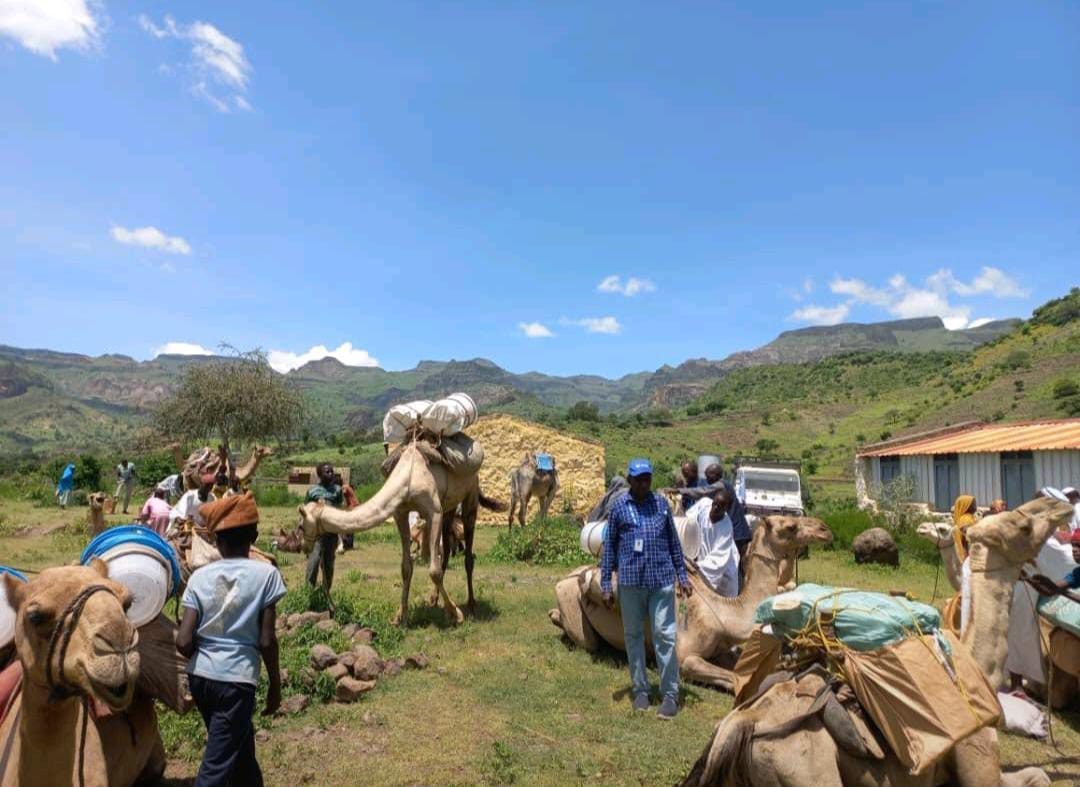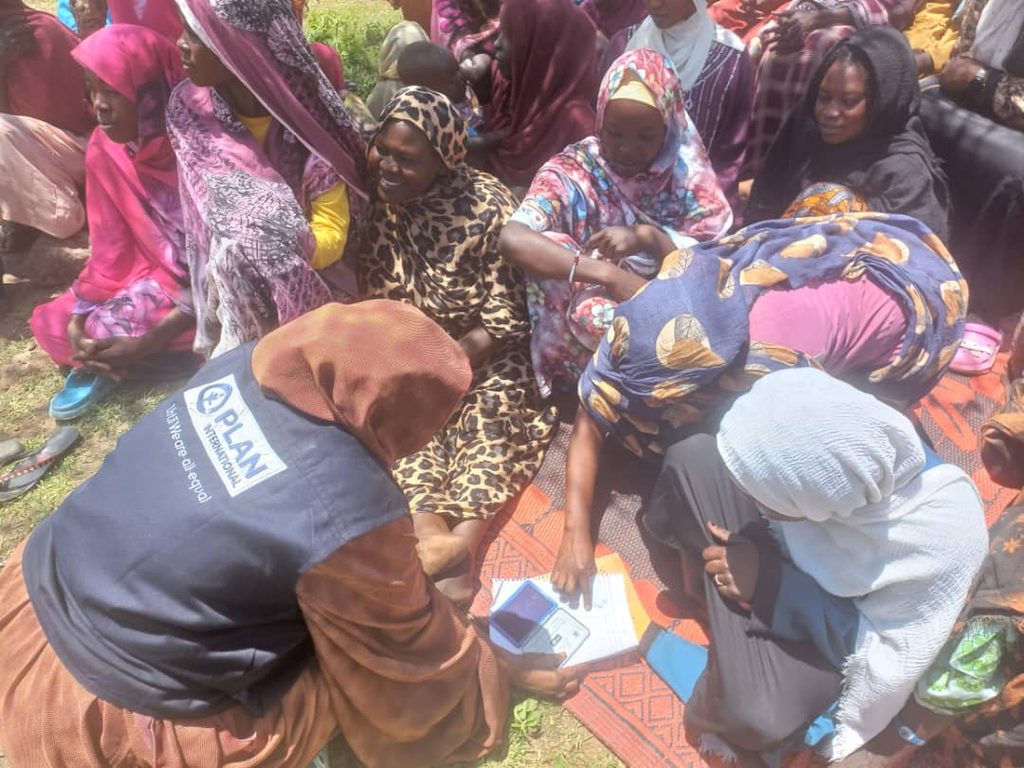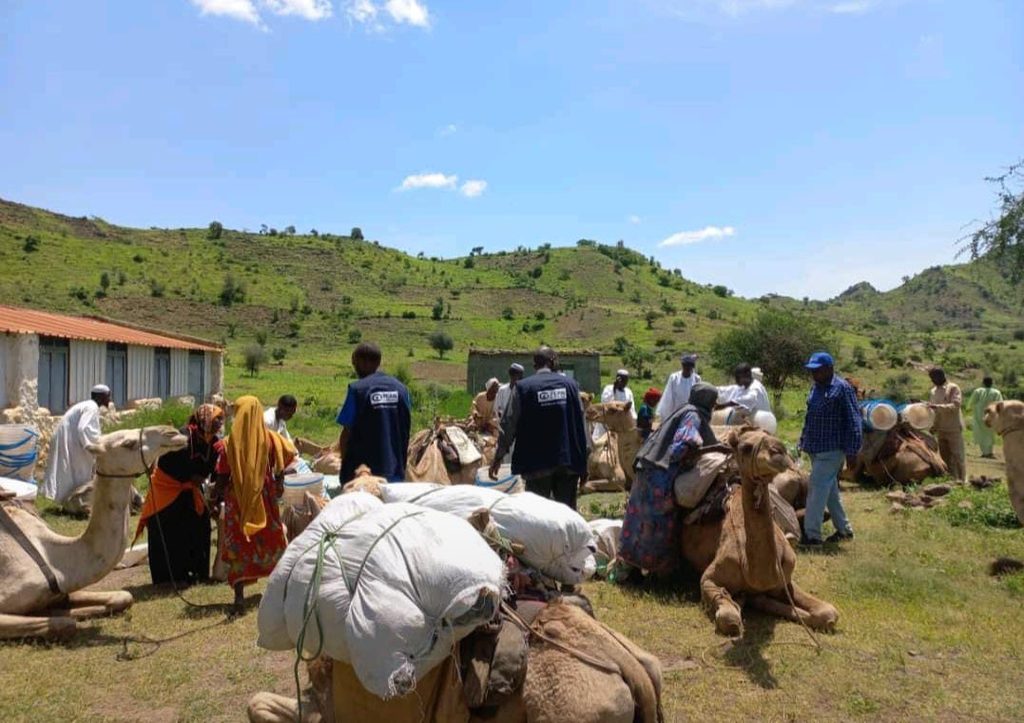Crossing mountains for humanity
15 October 2025In Sudan’s Darfur region, where natural disaster collided with conflict, humanitarian workers faced a daunting journey to Tarsin – a village struck by a deadly landslide while already struggling to recover from years of conflict and displacement. Angela Muriithi, Plan International’s Sub-regional Director, reflects on the humanitarian response, the challenges of access, and the resilience of those who continue to cross mountains, literally and figuratively, for humanity.

On 31st of August 2025, the village of Tarsin, in Western Sudan virtually disappeared.
Homes, orchards, livestock, whole families – gone.
Local authorities spoke of hundreds dead, while the Sudan Liberation Army (SLA), which controls parts of the area and has long used Jebel Marra as its stronghold, sent out urgent SOS messages claiming the toll was in the thousands. Weeks later, the numbers remain disputed. Was it 372 lives lost, or closer to a thousand? The truth is still buried under the mud.
And here lies one of the defining challenges of humanitarian response during conflict: when data itself becomes contested, how do we ensure that people’s suffering is neither diminished nor politicised? The lack of accurate data, compounded by the inaccessibility of hard-to-reach areas, is not just a logistical obstacle – it is a barrier to truth, to visibility, to accountability.
When natural disaster collides with conflict
In Tarsin, natural disaster collided with protracted conflict. Communities already displaced and traumatised by years of conflict suddenly found themselves struck by a catastrophe of nature.
Among Tarsin’s 18,000 residents are some 2,000 internally displaced people who had sought refuge there after fleeing flashpoints like Zamzam – an internally displaced persons camp that endured intensified Rapid Support Forces attacks earlier this year, and El Fasher, the capital of North Darfur, now under relentless military siege.

For many, the hills of Tarsin offered a fragile sanctuary from the violence. And yet, when the rains came, even that refuge crumbled. As humanitarians, we must ask: what does an effective response look like in such a place, where needs are layered, chronic, and inseparable from the conflict that surrounds them?
In Darfur, conflict defines every layer of vulnerability. It is why a landslide becomes more than a landslide, why flooding collides with the hunger of children, the absence of health care, and the exposure of families without shelter.
It is why humanitarian aid so often gets entangled with politics, even when ideally it should not and why even casualty figures become contested. And it is why, in this case, a rebel group sent out an SOS.
The relentless journey to Tarsin
It took our team 8 long days to reach Tarsin from Tawilla. They moved slowly, across broken roads and through treacherous terrain, until the vehicles could go no further. From there, they pressed on with camels and donkeys carrying what they could. The distances that look so short on a map stretched endlessly.
It took 4 hours from Tawilla to Soni, and then another 3 from Soni to Tarsin by road, followed by a 2 hour, 9 kilometre climb through unforgiving hills that seemed to rise ceaselessly.
Luckily in this case, despite the 7 checkpoints between Tawilla and Soni (where the road ends!), and possibly because the SLA themselves had raised the alarm, their personnel were cooperative and humanitarian teams from Plan International and other agencies were able to travel safely.
A fundamental tenet of International Humanitarian Law is that civilians have the right to receive assistance, and humanitarian actors must be granted safe and unfettered access.

What the humanitarian teams from Plan International and other agencies that had managed the long journey found was stark. There were no health centres, not even the most basic.
When the rains came, they came violently, enough to trigger landslides. But the wadis that carried the floodwaters emptied almost as quickly as they swelled. By the time humanitarian teams arrived, they were already running dry, leaving families with nothing safe to drink.
People slept in the open, piecing together scraps of stone and grass, or nothing at all, to shield themselves from the rain. Malnutrition was written on the bodies of the children, nearly 1 in 5 showing the frail signs of severe acute hunger. And everywhere, protection risks hung heavy in the air. Women and girls walking for hours through dangerous terrain just to find water, children out of school, their futures suspended, families huddled without privacy, without safety.
In a context like this, humanitarian action is not just about the delivery of food kits or medicines. It is about holding open humanitarian space itself – a space that conflict threatens to close. And so another question emerges: how do we keep places like Tarsin from slipping into invisibility once the headlines fade, while avoiding the risk that humanitarian action itself becomes a bargaining chip in the wider conflict?
How do we keep places like Tarsin from slipping into invisibility once the headlines fade?
With the support of our funding partners, we were able to bring something – food, water, dignity kits for women and girls, even clothes for children. It mattered to those who received them. You could see it in their faces – in the quiet relief of a mother given soap and sanitary pads, in a father who could carry home a small bag of food. But in truth, it was a drop in the ocean. The needs in Tarsin are vast, stretching far beyond what we were able to deliver. What we carried in was not nothing, but it was nowhere near enough.
The story of Tarsin is not only about tragedy. It is also about resilience, solidarity, and the stubborn insistence of communities and of humanitarians, to cross mountains, literally and figuratively, to show that lives in forgotten places still matter.
Lessons from Tarsin
For humanitarians, Tarsin is a lesson that our readiness to respond, which we often treat as a technical given, is, in truth, a matter of life and death for those affected. And to be ready means investing in sustained, anticipatory presence, building strong local partnerships so that we do not appear only in moments of crisis and disappear soon after – like the rains that come in torrents and then vanish.
It also means having a deep understanding of the context, as well as the diplomatic and political acumen to navigate power dynamics and negotiate access, because disasters do not wait for peace agreements. They can strike the poorest and most remote, in places the world too often deems inaccessible. And when they strike, every second, every minute counts for the most vulnerable.
Our response should not be like the rains that come in torrents and then varnish.
We must also advocate for flexible funding that allows us to act swiftly, stay longer, and adapt to realities as they evolve. Above all, we must reassert that impartial, principled humanitarian action is not an act of charity but a duty of solidarity, one that demands courage, persistence, and a willingness to cross mountains, again and again, for humanity itself.
Categories: Emergencies





